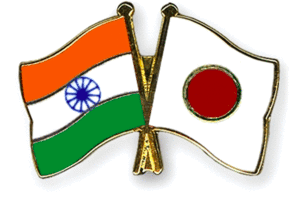
The Official Development Assistance (ODA) has been a major point in Japan’s economic cooperation with India since 1958 when Japan provided its first ODA Loan to India and since then it has been a regular feature of this relationship. Japan offered a low-interest long-term loan to India as part of its soft loans policy so that they not only gain goodwill and trust but also have their presence felt in the Indian markets. The goal of the ODA in India is to make it an important tool to strengthen the India-Japan strategic and global partnership with sustained growth in Asia, and the initiative has found a need to improve the investment scenario in India by providing the scope for developing infrastructure and poverty reduction. India still has a major section of its population below the poverty line. As a sworn abider of the UN’s SDGs and in the interest of global environment fight, the ODA route to development can be beneficial in unleashing sustainable development for India.
The year of 2007 became a hallmark in the bilateral relations between the two countries, even as they aimed for “the Roadmap for New Dimensions to the Strategic and Global Partnership between Japan and termed it “the year of Friendship”. Since then, India has become Japan’s focal point due to the rise of China. India gradually became the largest recipient of the Japanese ODA loan as people in Japan demanded that ODA loan be cut from China on the grounds of human rights violations and lack of democracy. This was a major gain for Indian diplomacy as Japan was very keen to help India develop and get access to its markets, and abundant labour force.
Japan’s relations with its immediate neighbour China is mostly hot and cold, and with China’s aggressiveness in the East China Sea. Japan has been cautious in making investments in China because of the growing tensions between them due to the Senkaku/Diaoyu Island conflict. Also, Japan has a major concern in China’s ageing population and is tempted to shift its manufacturing base to India as it is abundant in the labour force and has a big market. Also, the recent Coronavirus pandemic spread across China has paved the way for most Japanese companies to move their factories out of China, particularly to Southeast Asian countries. Japan has been investing heavily and has been pushing for establishing manufacturing hubs but India’s primary concern has been poor infrastructural development.
The Indian Ocean is a primary interest area for trade, and India has a major stake in it. Japan imports its oil and energy resources through the sea-lanes passing through the Indian Ocean. Japan would like India to be the export hub to reach out to the economies of West Asia and aim for minimizing their shipping costs. Japan considers India a very important partner in their ‘Free and open Indo-Pacific (FOIP) vision’. As such, the ODA will help Tokyo develop high-quality infrastructure in the Indo-Pacific region to encourage the flow of people and goods.
Most of the ODA loans given by Japan focus on physical infrastructure projects like railways, roads, ports and renewable energy which directly impact the economic growth of India as well as increase the jobs helping India’s flagship initiatives like ‘Make In India’ and ‘Skill India’. The loans have also helped boost the ‘India-Japan Digital partnership’ especially through IT companies and Digital ICT Technologies and in setting up ‘Start-Up Hubs’. Japanese assistance has improved physical infrastructure; for instance, it helped to the construction of the Mumbai subway network has been helpful to the Delhi Metro Project with contributions from Japan International Cooperation Agency (JICA). The other project supported by JICA has been the Mumbai-Ahmedabad High-Speed Railway (HSR) aiming for the betterment in India’s infrastructural, economic and industrial growth. JICA also provides loans for other projects like the desalination plants in Chennai to water and sewage networks to cities like Bengaluru and Bhubaneshwar, and have also added freight corridors and urban transportation.
In the context of the ODA, on 27 March 2020, JICA signed loan agreements of 374.44 billion Yen with the Government of India for nine projects consisting of the following:
- Dedicated Freight Corridor Project (Phase1)(IV)(loan amount: 130 billion yen)
- Mumbai Metro Line 3 Project (III)(loan amount: 39.928 billion yen)
- Ahmedabad Metro Project (II)(loan amount: 13.967 billion yen)
- Mumbai Trans-Harbour Link Project (II)(loan amount: 66.909 billion yen)
- North East Road Network Connectivity Improvement Project (Phase 4)(loan amount: 14.926 billion yen),
- Madhya Pradesh Rural Water Supply Project(loan amount: 55.474 billion yen)
- Project for Pollution Abatement of Nag River in Nagpur(loan amount: 29.082 billion yen)
- Project for Ecosystem Restoration in Gujarat(loan amount: 13.757 billion yen
- Project for Community-Based Forest Management and Livelihoods Improvement in Meghalaya (loan amount: 10.397 billion yen).
The importance of these projects would help support the economic growth reflected through urban infrastructure and rural development. India and Japan have been one of the strongest friends without any historical baggage or any conflict, whether on land or at sea. The bilateral relationship is well on the path to reap greater benefits out of these ODA loans paving the way for infrastructural, economic and industrial development. These collaborations between the two countries augur well for the spirit of Free and Open Indo-Pacific in the future.
**Gitanjali Sinha Roy is a PhD scholar in the Department of East Asian Studies, University of Delhi and at the moment, she is a visiting scholar at the University of Tokyo.**
![]()

